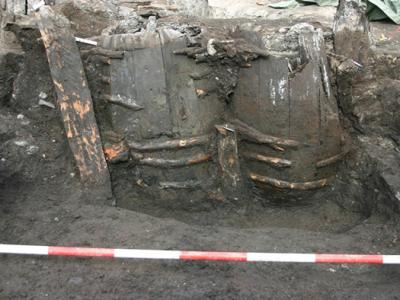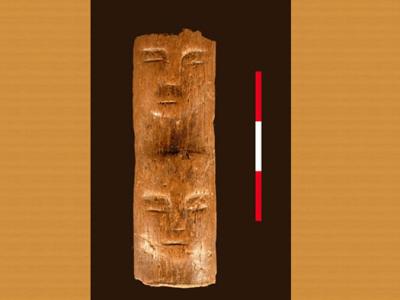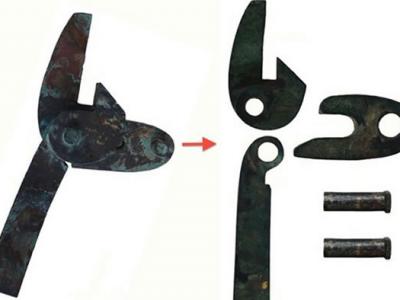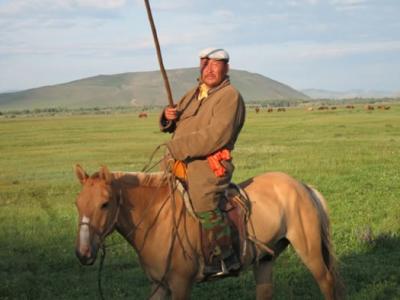Trampling Skews Artifact Dates by Thousands of Years?
Water buffaloes trample "artifacts" in India for a recent study.
Ker Than
for National Geographic News
Published September 29, 2010
Around the world, the hooves of water buffaloes, goats, and other large animals may have propelled countless Stone Age artifacts back in time, at least as far as archaeologists are concerned.
In wet areas, wild or domestic animals' heavy footfalls can push stone artifacts deep into the ground, making them seem older than they really are—in some cases, thousands of years older—according to a new study.
Scientists often date artifacts of the Stone Age, which began about two and a half million years ago, based on the depths at which the items are found: The deeper the object, the older it is, generally speaking.
There are other methods to date artifacts, but many rely on elements not found in stone—such as carbon.
"We can only do carbon dating on organic material that is associated with the stones," said study author Metin Eren, an archaeologist at Southern Methodist University in Dallas, Texas.
So if a stone artifact is next to a twig, for example, Eren said, "we'll date the twig and just assume that the artifact is also that age."
But in the new study, published in the Journal of Archaeological Science, Eren and his team show at least one way this method can lead to false ages for artifacts.
Mud Makes Data Go Soft
Archaeologists have long known that animal trampling can reorient artifacts—sometimes long after humas have left a site—and several trampling experiments have been performed on dry ground.
The new study, though, is the first to investigate the effects of trampling on water-saturated ground, such as near a water source—where a disproportionate number of human settlements happen to be found.
In an experiment, Eren, a master flint knapper, made replicas of early Stone Age tools, which he and his team scattered over a section of muddy ground in India's Jurreru River Valley. They then asked local herdsmen to walk their water buffaloes and goats across the area. (Also see "Ancient Stone 'Tools Found; May Be Among Americas' Oldest.")
"We then let everything settle and let the sediments dry and proceeded to excavate the area as if it were a real site," Eren said. "To our amazement, the disturbance was much greater than we had anticipated."
In some cases, the animals' hooves had pushed artifacts as much as 8 inches (21 centimeters) into the ground—a difference that can throw an age estimate off by thousands of years. (Related: "'Thor's Hammer' Found in Viking Graves.")
But in some instances, animal trampling would have made artifacts seem younger than they really were.
"If a water buffalo steps just next to an artifact, it displaces [the mud] and actually pushes it upward, making it appear younger," Eren explained.
Trampling could even create the illusion of ancient sites where none really existed. For example, "you could have artifacts washing into a valley from somewhere else and herds walk over them, pushing the artifacts into the ground," Eren said.
How to Spot a Suspect Site
Fortunately, the experiment also revealed a simple way to tell if a site has been trampled. When an animal walks over on an artifact in the mud, the creature's foot will often fall more firmly on one end of the object, causing that end to dip lower into the soft sediment than the other end.
As a result, a site that's been trampled by several animals will contain artifacts lying at various angles, Eren explained. Normally, buried artifacts end up pointing in the same basic direction.
"You generally don't get that in undisturbed open-air sites," he said. "So if you're excavating, and the angles of your artifacts are completely random, you can be pretty sure that the site has been disturbed, and you should be careful about any conclusions that you draw."
The new findings could explain a mysterious discovery at a site in India called Attirampakkam, where archaeologists recently discovered some Stone Age hand axes and other tools that appear to have been buried in nearly vertical positions. (Related: "Stone Age Hand Axes Found at Bottom of North Sea.")
"People wondered why this was, but after our experiment, it occurred to us that [Attirampakkam] is in a floodplain," Eren said. "So what's actually causing these hand axes to be vertical is probably the fact that they've got large mammals walking over them."
Past Findings in Jeopardy?
Anthropologist Julien Riel-Salvatore of the University of Colorado Denver said the new study was "really insightful and important."
"Even though archaeologists were aware of this, we haven't really known how to go about testing just how disruptive some of these processes were," said Riel-Salvatore, who was not involved in the study.
"Pretty much any open-air site located near a water source will potentially be very seriously affected by some of these conclusions."












